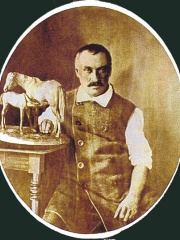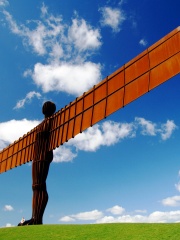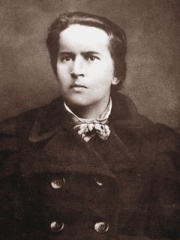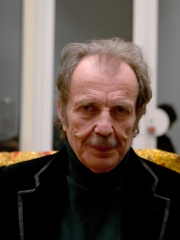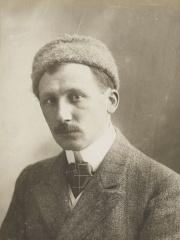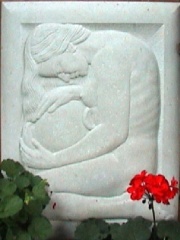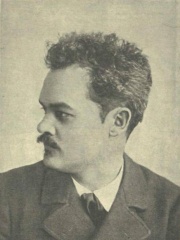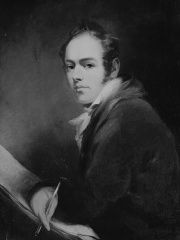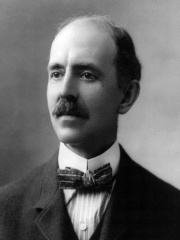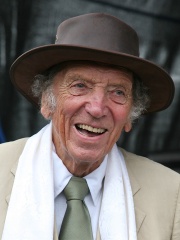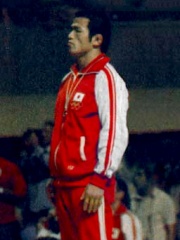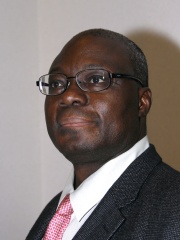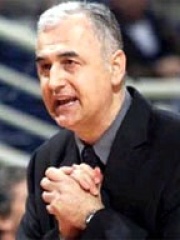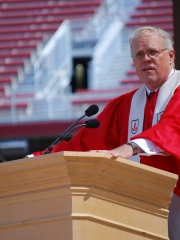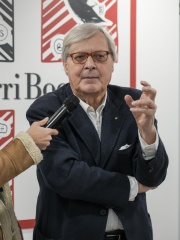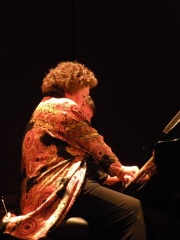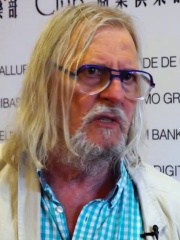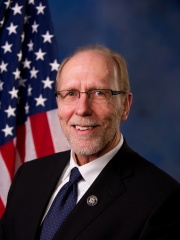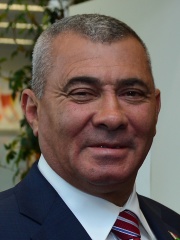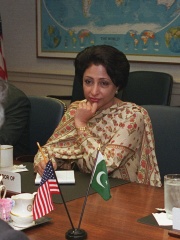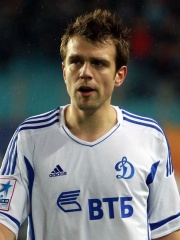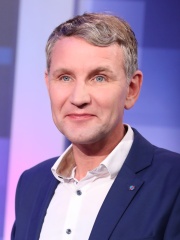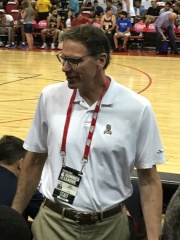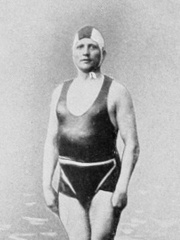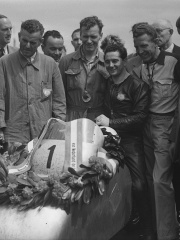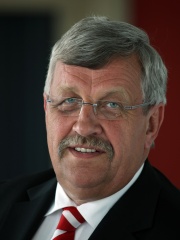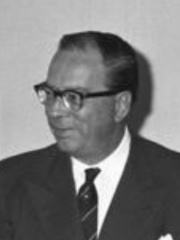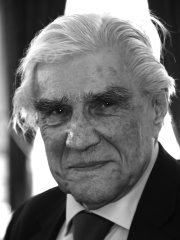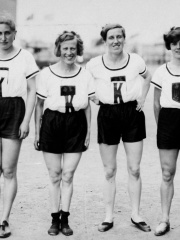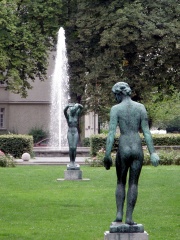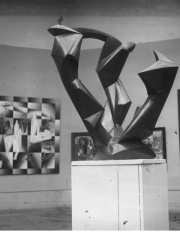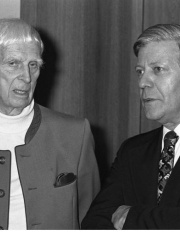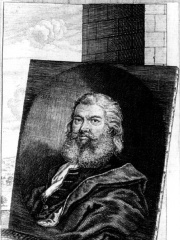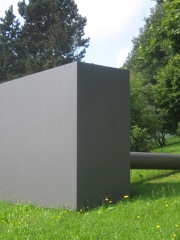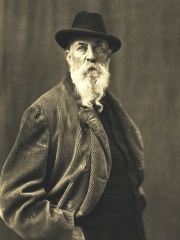SCULPTOR
Rosemarie Trockel
1952 - Today
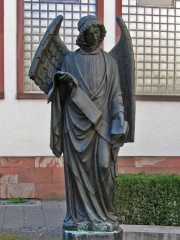
 Rosemarie Trockel
Rosemarie Trockel
Rosemarie Trockel (born 13 November 1952) is a German conceptual artist. She has made drawings, paintings, sculptures, videos and installations, and has worked in mixed media. From 1985, she made pictures using knitting-machines. She is a professor at the Kunstakademie Düsseldorf, in Düsseldorf in Nordrhein-Westfalen. Read more on Wikipedia
Her biography is available in 19 different languages on Wikipedia. Rosemarie Trockel is the 227th most popular sculptor (down from 225th in 2024), the 4,986th most popular biography from Germany (up from 5,054th in 2019) and the 19th most popular German Sculptor.
Memorability Metrics
Page views of Rosemarie Trockel by language
Among SCULPTORS
Among sculptors, Rosemarie Trockel ranks 227 out of 258. Before her are Peter Clodt von Jürgensburg, Antony Gormley, Stepan Erzia, Anna Golubkina, Franz West, and Léon Delagrange. After her are Hellmuth Marx, János Fadrusz, Francis Leggatt Chantrey, Daniel Chester French, Nikolai Tomsky, and Knut Steen.
Most Popular Sculptors in Wikipedia
Go to all RankingsPeter Clodt von Jürgensburg
1805 - 1867
HPI: 55.02
Rank: 221
Antony Gormley
1950 - Present
HPI: 54.99
Rank: 222
Stepan Erzia
1876 - 1959
HPI: 54.96
Rank: 223
Anna Golubkina
1864 - 1927
HPI: 54.83
Rank: 224
Franz West
1947 - 2012
HPI: 54.73
Rank: 225
Léon Delagrange
1872 - 1910
HPI: 54.69
Rank: 226
Rosemarie Trockel
1952 - Present
HPI: 54.67
Rank: 227
Hellmuth Marx
1915 - 2002
HPI: 54.62
Rank: 228
János Fadrusz
1858 - 1903
HPI: 54.60
Rank: 229
Francis Leggatt Chantrey
1781 - 1841
HPI: 54.18
Rank: 230
Daniel Chester French
1850 - 1931
HPI: 53.99
Rank: 231
Nikolai Tomsky
1900 - 1984
HPI: 53.49
Rank: 232
Knut Steen
1924 - 2011
HPI: 53.49
Rank: 233
Contemporaries
Among people born in 1952, Rosemarie Trockel ranks 439. Before her are Jiichiro Date, Stanislav Seman, Kama Sywor Kamanda, Dragan Šakota, John L. Hennessy, and Vittorio Sgarbi. After her are Brigitte Engerer, Didier Raoult, Dave Loebsack, Valeriy Pidluzhnyy, Albert Camille Vital, and Maleeha Lodhi.
Others Born in 1952
Go to all RankingsJiichiro Date
WRESTLER
1952 - 2018
HPI: 54.84
Rank: 433
Stanislav Seman
SOCCER PLAYER
1952 - Present
HPI: 54.81
Rank: 434
Kama Sywor Kamanda
WRITER
1952 - Present
HPI: 54.81
Rank: 435
Dragan Šakota
BASKETBALL PLAYER
1952 - Present
HPI: 54.75
Rank: 436
John L. Hennessy
COMPUTER SCIENTIST
1952 - Present
HPI: 54.68
Rank: 437
Vittorio Sgarbi
POLITICIAN
1952 - Present
HPI: 54.68
Rank: 438
Rosemarie Trockel
SCULPTOR
1952 - Present
HPI: 54.67
Rank: 439
Brigitte Engerer
MUSICIAN
1952 - 2012
HPI: 54.65
Rank: 440
Didier Raoult
PHYSICIAN
1952 - Present
HPI: 54.63
Rank: 441
Dave Loebsack
POLITICIAN
1952 - Present
HPI: 54.63
Rank: 442
Valeriy Pidluzhnyy
ATHLETE
1952 - 2021
HPI: 54.61
Rank: 443
Albert Camille Vital
POLITICIAN
1952 - Present
HPI: 54.59
Rank: 444
Maleeha Lodhi
POLITICIAN
1952 - Present
HPI: 54.57
Rank: 445
In Germany
Among people born in Germany, Rosemarie Trockel ranks 4,989 out of 7,253. Before her are Zvjezdan Misimović (1982), Björn Höcke (1972), Willy Bandholz (1912), Kiki VanDeWeghe (1958), Paul Günther (1882), and Werner Haas (1927). After her are Walter Schröder (1932), Frank Kugler (1879), Walter Lübcke (1953), Georg Ferdinand Duckwitz (1904), Jean Malaurie (1922), and Anni Holdmann (1900).
Others born in Germany
Go to all RankingsZvjezdan Misimović
SOCCER PLAYER
1982 - Present
HPI: 54.69
Rank: 4,983
Björn Höcke
POLITICIAN
1972 - Present
HPI: 54.69
Rank: 4,984
Willy Bandholz
POLITICIAN
1912 - 1999
HPI: 54.68
Rank: 4,985
Kiki VanDeWeghe
BASKETBALL PLAYER
1958 - Present
HPI: 54.67
Rank: 4,986
Paul Günther
ATHLETE
1882 - 1959
HPI: 54.67
Rank: 4,987
Werner Haas
RACING DRIVER
1927 - 1956
HPI: 54.67
Rank: 4,988
Rosemarie Trockel
SCULPTOR
1952 - Present
HPI: 54.67
Rank: 4,989
Walter Schröder
ATHLETE
1932 - 2022
HPI: 54.66
Rank: 4,990
Frank Kugler
ATHLETE
1879 - 1952
HPI: 54.66
Rank: 4,991
Walter Lübcke
POLITICIAN
1953 - 2019
HPI: 54.65
Rank: 4,992
Georg Ferdinand Duckwitz
DIPLOMAT
1904 - 1973
HPI: 54.65
Rank: 4,993
Jean Malaurie
ANTHROPOLOGIST
1922 - 2024
HPI: 54.64
Rank: 4,994
Anni Holdmann
ATHLETE
1900 - 1960
HPI: 54.64
Rank: 4,995
Among SCULPTORS In Germany
Among sculptors born in Germany, Rosemarie Trockel ranks 19. Before her are Georg Kolbe (1877), Rudolf Belling (1886), Gerhard Marcks (1889), Balthasar Permoser (1651), Martin Kippenberger (1953), and Reinhold Begas (1831).
Georg Kolbe
1877 - 1947
HPI: 59.46
Rank: 13
Rudolf Belling
1886 - 1972
HPI: 58.88
Rank: 14
Gerhard Marcks
1889 - 1981
HPI: 58.64
Rank: 15
Balthasar Permoser
1651 - 1732
HPI: 58.19
Rank: 16
Martin Kippenberger
1953 - 1997
HPI: 57.70
Rank: 17
Reinhold Begas
1831 - 1911
HPI: 57.01
Rank: 18
Rosemarie Trockel
1952 - Present
HPI: 54.67
Rank: 19
